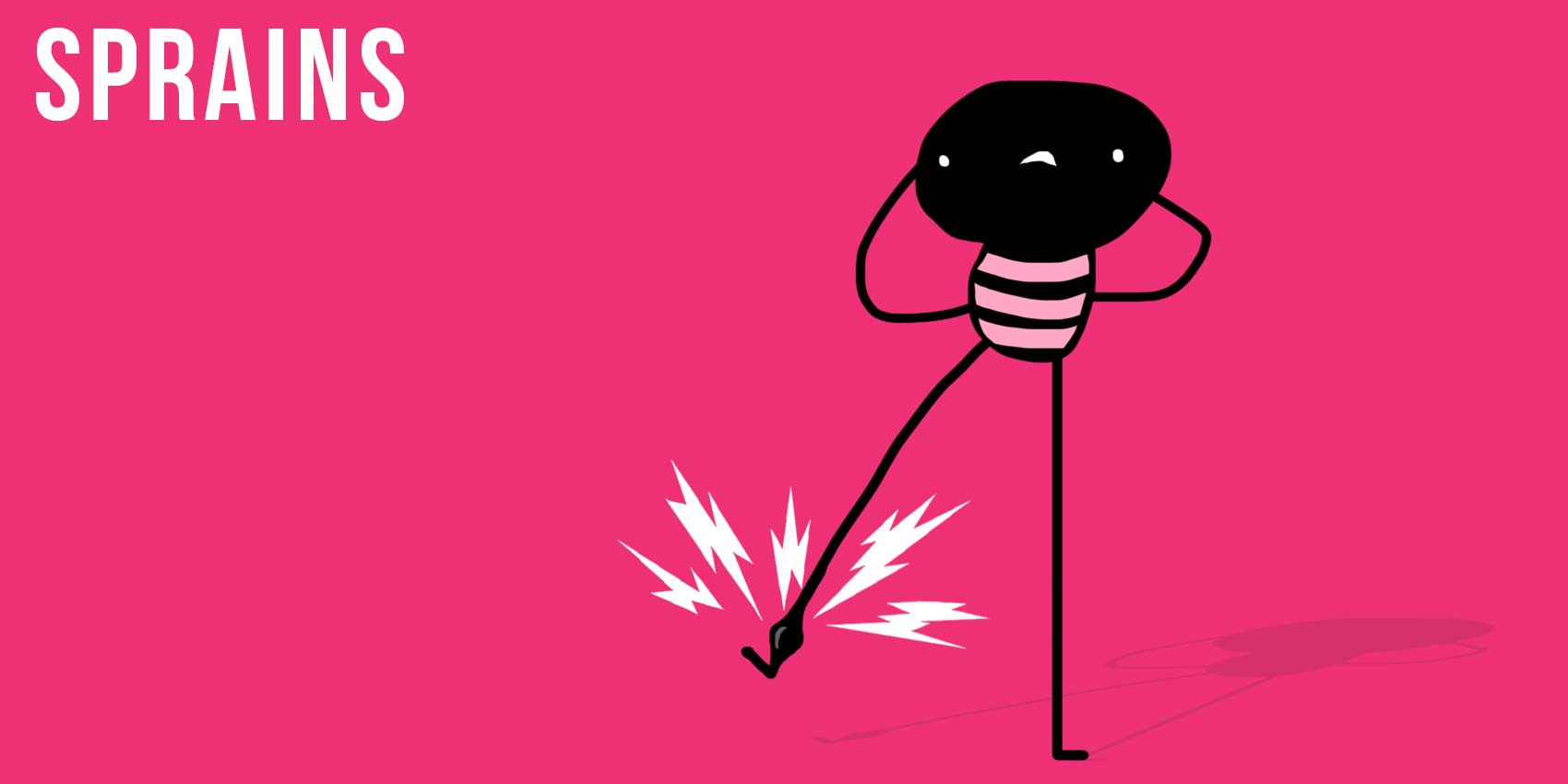21 Sep Sprains

First of all, here are some basics on the lingo involved with sprains, strains and tendonitis (so you understand the difference):
- A sprain is a ligament injury. (Ligaments connect bone to bone.)
- A strain is a muscle pull, stretch or tear.
- Tendonitis is an overuse injury that causes swelling because the rate of tissue breakdown/tear exceeds the rate of repair. (Tendons connect muscle to bone.)
(Tendons and Ligaments are also referred to as ‘connective tissue.’)
Ankle sprains are very common—the most common form being an inversion sprain in which the bottom of the foot turns inwards toward the other leg. They typically occur from landing on an unstable surface (i.e., landing on a divot on a football field, landing on someone else’s foot after jumping during a basketball game) or from planting the foot and the body moving too far over the foot. Sometimes a “pop” can be felt.
There are 4 degrees of sprains:
- Grade I is when the ankle turns in slightly and stretches the ligament on the outside of the foot.
- Grade II is when that ligament stretches and tears slightly.
- Grade III is when the ligament tears from 50- 100%.
- Grade IV is when there is full tears with a dislocation from the ankle as well.
Grade I sprains can be treated with ice.
For Grade II sprain and above, you really need to see an orthopedist. These sprains will require physical therapy (PT) to help minimize swelling and pain as well as to strengthen and stabilize the ankle to prevent further injury. This is extremely important because… (drum roll please, Harrison)… ankle sprains can recur if not treated properly.
For athletes that have incurred multiple sprains, ankle-taping by an athletic trainer or an ankle brace should be used to prevent excessive joint movement. Physical therapy would focus on stretching the tight muscles and strengthening muscles around the ankle that control balance and stability.

DID YOU KNOW? Muscle mass is increased when you lift weights. This is because you are creating tiny tears in the muscle that need to be repaired. It is through the healing/repair process that they build more bulk (which is why you rest that muscle the next day and work on other parts of your body).

Harrison, I can’t believe you were going out to play again… you boys think about nothing else but playing sports!
That’s so not true! I think about other things… sometimes….

What else teenage boys do think about is a whole other section. But, Nicki, girls are increasingly playing sports and, in fact, one of the top five injuries is more prone to females than males: Patella- Femoral Pain Syndrome.

What the heck is that?
It’s the next post.

“Baseball is 90% mental, the other half is physical.”
— Yogi Berra



Post Question:
Have you ever had a sprain? What happened?
Answer the post question here
What's being said